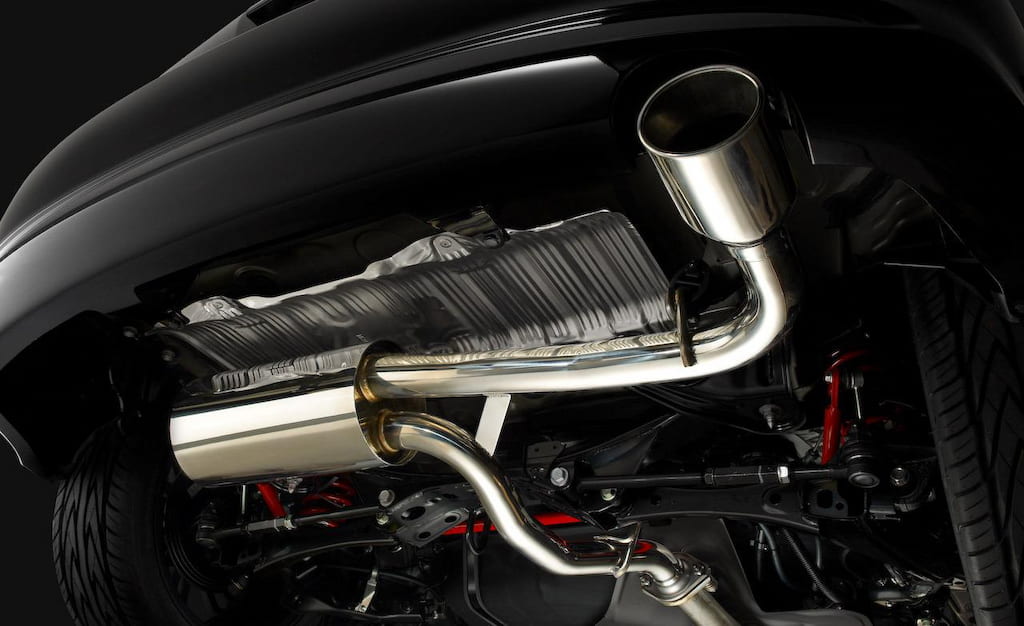How Exhaust Systems Impact Car Performance?


Contents [show]
Introduction
The automotive sector is a dynamic one that is always changing to improve the efficiency of vehicles, their performance, and their environmental friendliness. The exhaust system is one important part that is vital to reaching these objectives. Apart from its main purpose of removing exhaust fumes from the engine’s combustion process, the exhaust system greatly influences the overall performance of an automobile. We will examine all facets of the exhaust system and how they affect a car’s performance, economy, and environmental impact in this thorough investigation.
The Citroen ds3 exhaust system is a vital component influencing the car’s performance. Known for its innovative design, the Citroen DS exhaust system optimizes gas flow, reduces backpressure, and contributes to enhanced power and efficiency. Enthusiasts often appreciate the unique sound and overall driving experience provided by this distinctive exhaust system.
The function of the Exhaust System
How the Exhaust System Works
Before exploring how exhaust systems affect performance, it’s critical to comprehend their main purposes. The purpose of the exhaust system is to direct and release the toxic gases, including nitrogen oxides, carbon monoxide, and unburned hydrocarbons, that are produced during combustion. It also attenuates sounds produced during burning, guaranteeing adherence to noise pollution standards.
Impact on Engine Power
One of the primary ways exhaust systems alter a car’s performance is through its effect on engine power. The effectiveness of exhaust gas expulsion directly affects the engine’s breathing capacity, which in turn affects combustion efficiency. Performance aficionados usually swap out their factory exhaust systems for aftermarket units designed to increase airflow, reduce restriction, and enhance scavenging effects. These modifications can result in increased torque and horsepower, which can significantly boost overall performance.
Higher-flow mufflers or resonators, mandrel bends, and larger-diameter pipes are common components of performance-oriented exhaust systems. Better combustion gas flow is made possible by the larger diameter, which reduces the noise, backpressure and encourages effective scavenging. When compared to conventional crush-bent pipes, mandrel bends further reduce constraints by maintaining a constant diameter during the bends. A more aggressive exhaust note can be produced by using high-flow mufflers and resonators, which improve sound attenuation without compromising performance.
Backpressure and Its Effects
While minimizing backpressure is crucial for optimizing engine performance, a certain amount of backpressure is necessary for proper exhaust gas scavenging. Scavenging occurs when the flow of exhaust gases helps pull out the remaining exhaust gases from the combustion chamber, improving combustion efficiency. Striking the right balance between minimizing backpressure and ensuring effective scavenging is essential for maximizing engine power.
Excessive backpressure can hinder the engine’s ability to expel exhaust gases, leading to reduced power, increased operating temperatures, and potential engine damage. Performance exhaust systems aim to find the sweet spot, allowing for optimal gas flow without compromising scavenging effects.
Fuel Efficiency and Emissions
Exhaust systems are not only important for car engine power but also emissions and fuel efficiency in automobiles. A well-thought-out exhaust system enhances overall efficiency by lowering fuel waste and promoting improved fuel combustion. Performance-focused exhaust systems can improve fuel efficiency by facilitating a more thorough burn of the fuel-air mixture, which can improve combustion.
Exhaust systems are also essential to the control of emissions. An essential part of contemporary exhaust systems, catalytic converters help lower hazardous emissions by changing pollutants into less dangerous forms. A cleaner and greener car can be achieved by switching to custom exhaust systems with cutting-edge pollution control technologies or by upgrading to outstanding performance catalytic converters.
Weight Reduction and Vehicle Dynamics
Their weight affects an automobile’s overall performance in addition to the gas flow patterns of exhaust systems, which can yield performance increases. The total weight of aftermarket exhaust systems is typically lower than that of stock systems since they frequently make use of lightweight materials like titanium or stainless steel. The car’s dynamic performance can enhance by weight reduction through better acceleration, interaction with, and overall agility.
Furthermore, the center of gravity of an automobile can affect by the placement of exhaust components. Certain aftermarket exhaust systems have design components that optimize weight distribution, enhancing handling even more. Achieving the ideal weight distribution requires careful consideration of the exhaust system design, as automakers work to build vehicles that are both balance and highly efficient.
Sound and Aesthetics
While not directly related to performance, the sound produced by an exhaust system is a significant aspect for many car enthusiasts. Aftermarket exhaust systems often offer a more aggressive and distinctive exhaust note compared to stock systems. The sound produced is a result of the system’s design, including the type of mufflers or resonators used.
Performance-oriented exhaust systems strike a balance between enhancing sound characteristics and complying with noise regulations. The unique and attention-grabbing exhaust notes produced by these systems contribute to the overall driving experience, creating a sense of excitement and engagement for the driver.
Conclusion
In conclusion, the exhaust system of a car is a multifaceted component that goes beyond its primary function of expelling exhaust gases. It significantly influences a vehicle’s performance, including power, efficiency, emissions, and overall driving dynamics. Performance enthusiasts often turn to aftermarket exhaust systems to unlock additional horsepower, improve fuel efficiency, and enhance the auditory experience of driving.
As automotive technology continues to advance, exhaust system design will likely play an increasingly critical role in achieving a harmonious balance between performance, efficiency, and environmental sustainability. Whether for the thrill of increased power or the pursuit of eco-friendly driving, understanding the impact of exhaust systems on a car’s performance is crucial for both manufacturers and enthusiasts alike.





